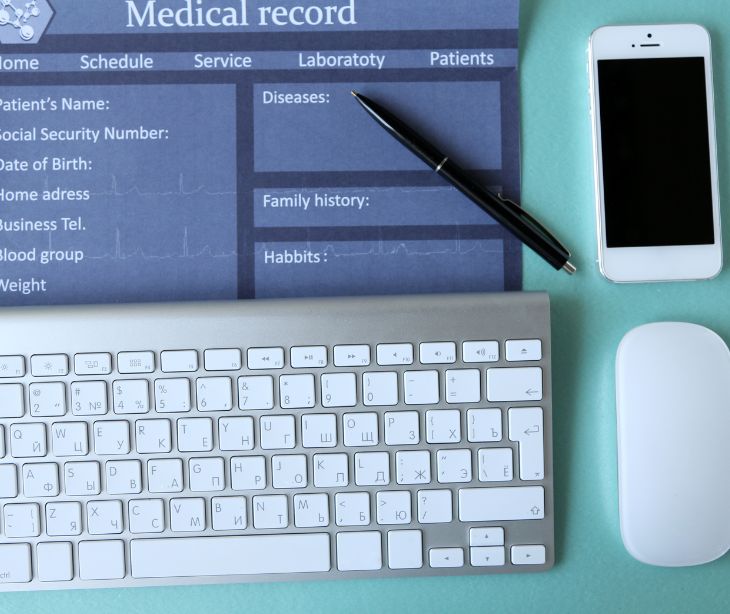
EMR software can be highly advantageous for physical therapy practices. By transitioning from paper-based systems to digital records, you can streamline various aspects of your practice, including scheduling, billing, documentation, and patient engagement. EMR software provides a secure and efficient way to store and manage patient information, while also offering integration with practice management tools.
Understanding EMR software
EMR, short for electronic medical records, is the digital version of medical charting used in clinics. These software systems securely store and manage patient information, including diagnoses, medical history, medications, and treatment plans, in compliance with HIPAA regulations.
In tandem with the rise of EMRs, patients are expressing a growing preference for online communication and email reminders for appointments. Yet, only 46% of physicians currently have EMR systems capable of meeting these demands.
Read more: Understanding electronic medical records (EMR)
Features of physical therapy EMR software
Scheduling
With EMR software, you can easily manage your schedule, taking into account factors such as insurance coverage and visit types. By having all this information in one system, you can optimize your scheduling process, minimize errors, and maximize the number of patients you can see on a daily, monthly, and yearly basis.
Billing
EMR software simplifies the billing process by integrating documentation with billing. You can document the services provided and generate invoices with just a few clicks, ensuring accurate billing and increasing the chances of reimbursement.
Documentation
EMR software allows you to easily document treatment sessions, track progress, and link documentation to billing codes. With access to previous notes and treatment plans, you can build upon each patient's program and measure their success.
Home exercise program
Prescribing and managing home exercise programs can be time-consuming, especially if you're relying on manual methods or separate programs. EMR software simplifies this process by allowing you to easily create and send home exercise programs to your patients through a secure patient portal or HIPAA compliant email system.
See also: HIPAA Compliant Email: The Definitive Guide
Integration with practice management software
In addition to the specific features mentioned above, physical therapy EMR software often integrates seamlessly with practice management software. This integration brings together all the tools and information needed to run your practice efficiently. Here are some examples of how the integration can benefit your physical therapy practice:
- Streamlined workflow: Having patient information, scheduling, billing, and documentation in one software simplifies your workflow, minimizes errors, and saves time.
- Enhanced organization: Instead of searching through multiple drawers and filing cabinets, you can access all relevant information with just a few clicks. This improves overall organization, reduces physical space requirements, and increases operational efficiency.
- Increased revenue: By optimizing your workflow and reducing administrative tasks, you can spend more time on patient care, ultimately increasing the number of patients seen, patient referrals, patient retention, and overall revenue.
Benefits of using physical therapy EMR software
Decreased time spent on billing
Traditional paper-based billing is prone to errors and requires manual effort. EMR software with integrated billing capabilities reduces the time spent on billing tasks. With features like drop-down menus, autofill options, and error highlighting, physical therapists can streamline the billing process, minimize errors, and increase the efficiency of their practice.
Improved organization and space efficiency
By storing all patient records and practice information digitally, you can free up physical space in your clinic and reduce the clutter associated with paper-based systems. EMR software provides organizational tools that allow you to categorize and retrieve documents efficiently, leading to improved overall organization and ease of access.
Enhanced security of patient information
EMR software ensures the security and privacy of patient information by offering HIPAA compliant storage and transmission. EMR software also eliminates the risk of physical documents being misplaced or left unattended, further enhancing the security of your practice.
FAQs
What are the data security and privacy considerations when using EMR software?
- HIPAA compliance: It's important for physical therapy practices to ensure that the EMR software they use is compliant with HIPAA regulations to safeguard patient data and maintain confidentiality.
- Data backup and security protocols: Practices should implement data backup and security measures to protect patient information from unauthorized access, loss, or breaches.
- User access control: EMR software should provide options for controlling user access and permissions to ensure that only authorized personnel can view and modify patient records.
How can physical therapy EMR software help with regulatory and compliance requirements?
- Documentation compliance: EMR software can assist in maintaining accurate and compliant documentation, helping practices adhere to regulatory requirements and standards.
- Billing and coding compliance: Some EMR systems offer features to support accurate coding and billing practices, reducing the risk of compliance issues related to reimbursement and claims submission.
What are the potential challenges in implementing and using physical therapy EMR software?
- Transition and training: The transition to a new EMR system may require time and resources for training staff and adapting to new workflows.
- Integration with existing systems: Challenges may arise when integrating EMR software with existing practice management or billing systems, requiring careful planning and coordination.
What are the best practices for using physical therapy EMR software?
- Staff training: Ensure that all staff members are adequately trained on how to use the EMR software effectively to maximize its benefits.
- Customization: Take advantage of any customization options available in the software to tailor it to the specific needs and workflows of the practice.
- Regular updates: Stay informed about software updates and new features to make the most of the EMR system's capabilities.
Subscribe to Paubox Weekly
Every Friday we'll bring you the most important news from Paubox. Our aim is to make you smarter, faster.




